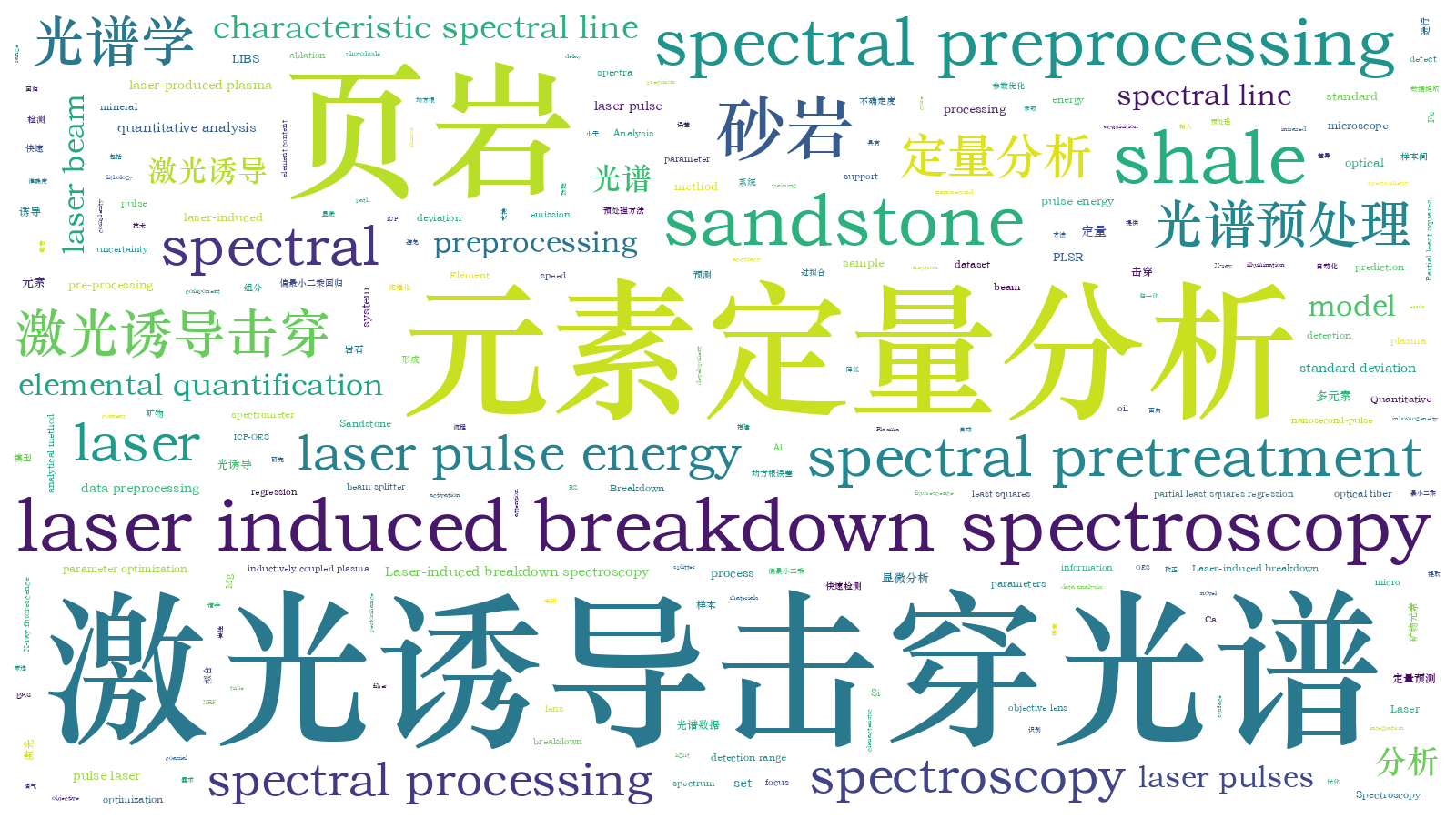基于激光诱导击穿光谱的页岩与砂岩多元素定量分析【增强内容出版】
Shale oil is an important unconventional resource that has become a major development focus. Owing to the possible reserves of petroleum and natural gas, information from core samples, which mainly contain geochemical and mineralogical information, has attracted increasing attention from geologists and energy enterprises. Conventional analytical methods for mineralogical analysis, including inductively coupled plasma optical emission or mass spectrometry (ICP-OES/MS), instrumental neutron activation analysis (INNA), and X-ray fluorescence (XRF), are unsuitable for the in-situ analysis of shale because of their slow analysis speed and limited detection range. Laser-induced breakdown spectroscopy (LIBS) is a novel analytical method for various materials that uses laser pulses focused on a sample to generate laser-produced plasma and spectral emissions. With the advantages of minimal sample preparation, remote analysis, microsample ablation, and high analytical speed, LIBS is an optional access method for analysis of cores. In this study, multi-element quantitative analysis of natural shale and sandstone samples is conducted using a micro-LIBS system. A standardized spectral preprocessing method is developed to reduce spectral uncertainty, and a model input parameter optimization process is established to prevent model overfitting while improving model prediction accuracy. A quantitative analysis of Si, Ca, Fe, Al, Mg, and other elements in the shales and sandstones is performed, and the average predicted root-mean-square error of most samples is less than 1%, providing technical support for regular mineral component analysis and lithology identification of shales and sandstones.
A micro-LIBS system was established in this study, consisting of a laser, spectrometer, timing synchronizer, computer, and optical microscope. The system used a nanosecond-pulse laser to generate a laser beam that passes through a laser beam splitter and was sampled by a photodiode to detect the laser timing. The transmitted laser beam was introduced into an optical microscope, adjusted to be coaxial with the microscope illumination light path through a laser mirror, and finally focused on the sample surface through a near-infrared objective lens to generate plasma. Plasma emission was collected by a short-focus lens to an optical fiber and connected to a six-channel spectrometer for spectrum collection; the integration time was set to 1 ms. The laser pulse energy was adjusted to 30 mJ, and the detection delay of the spectrometer was set to 800 ns. Before the spectrum acquisition, two laser shots were applied for pre-ablation to stabilize the pulse energy, and 10 accumulated spectra were collected and analyzed. Partial least squares regression was used for the data analysis.
Because of the variety, inhomogeneity, and complexity of the samples, it is necessary to perform spectral line preprocessing and characteristic spectral line identification of the extracted spectra before quantitative analysis. Therefore, this study establishes a set of spectral data pre-processing procedures. After spectral preprocessing, the average relative standard deviation of a single shale sample (
To meet the demands of rapid quantitative determination of mineral element content in natural shale and sandstone samples, a microanalysis laser-induced breakdown spectroscopy system with automated analysis capabilities is developed to rapidly detect and analyze oil and gas shale and sandstone natural samples. A standard process for spectral data preprocessing is established, and the average relative standard deviation of shales is reduced from 32.50% to 14.53%, and from 56.01% to 33.92% for sandstones. This study proposes a quantitative analysis process based on partial least squares regression (PLSR) with Si, Ca, Fe, Al, and Mg quantitatively predicted. The R2 value for most samples is 0.95, and the RMSEC and RMSEP values are lower than 1%. This study provides technical support for the rapid analysis of the mineral components in shale and sandstone samples. The proposed data pre-processing and quantitative analysis is expected to become a technical standard for LIBS analyses.
时铭鑫, 吴坚, 吴迪, 李京徽, 邱岩, 郭歆宇, 周颖, 宋自远, 陈民鑫. 基于激光诱导击穿光谱的页岩与砂岩多元素定量分析[J]. 中国激光, 2024, 51(8): 0811002. Mingxin Shi, Jian Wu, Di Wu, Jinghui Li, Yan Qiu, Xinyu Guo, Ying Zhou, Ziyuan Song, Minxin Chen. Multi-Element Quantitative Analysis of Shale and Sandstone Based on Laser Induced Breakdown Spectroscopy[J]. Chinese Journal of Lasers, 2024, 51(8): 0811002.







